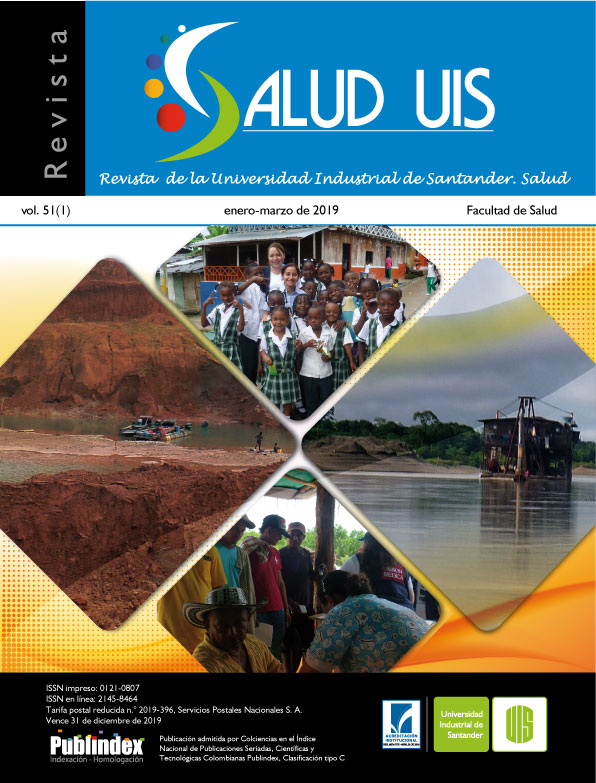Abstract
Introduction: The efficacy of topical treatments could be affected by the diversity of clinical forms (localized or disseminated cutaneous forms, mucosal forms) of New World-leishmaniasis caused by species of Leishmania from the subgenus Viannia. The aim of this study was to determine the cutaneous leishmaniasis features produced after infection with Leishmania (V.) braziliensis and L. (V.) panamensis in BALB/c mice and to determine the efficacy of one topical treatment. Materials and methods: Cutaneous leishmaniasis lesions were followed up after infection determining their lesion-size (mm2) and other macroscopic characteristics every 7 days for 150 days. Histopathological patterns (in lesions and organs) were determined 70, 106 and 150 days post-infection and the efficacy (lesion and parasitological cure) of miltefosine gel applied topical once a day for 20 days was determined. Results: An increase of size-lesions was observed in both groups of mice, however, a higher lesion- size and inflammatory response but lower epidermal changes were observed in L. (V.) braziliensis compared with L. (V.) panamensis infected ones. No parasites were observed in organs (nodules, spleen and liver) and no differences were observed in the effectiveness of the used topical treatment. Conclusion: The efficacy of the topical treatment used was not affected by the macro and microscopic differences produced after infection by the two Leishmania species evaluated.
References
2. Sundar S, Chakravarty J. Antimony toxicity. Int J Environ Res Public Health. 2010; 7(12): 4267-4277. doi: 10.3390/ijerph7124267.
3. Wolf-Nassif P, de Mello TFP, Navasconi TR, Mota CA, Demarchi IG, Aristides SMA, et al. Safety and efficacy of current alternatives in the topical treatment of cutaneous leishmaniasis: a systematic review. Parasitology. 2017; 144(8): 995-1004. doi: 10.1017/S0031182017000385.
4. Blum J, Lockwood DN, Visser L, Harms G, Bailey MS, Caumes E, et al. Local or systemic treatment for New World cutaneous leishmaniasis? Re-evaluating the evidence for the risk of mucosal leishmaniasis. Int Health. 2012; 4(3): 153-163.
5. Aronson N, Herwaldt BL, Libman M, Pearson R, Lopez-Velez R, Weina P, et al. Diagnosis and treatment of leishmaniasis: clinical Practice Guidelines by the Infectious Diseases Society of
America (IDSA) and the American Society of Tropical Medicine and Hygiene (ASTMH). Am J Trop Med Hyg. 2017; 96(1): 24-45. doi: 10.4269/ajtmh.16-84256.
6. Silva J, Queiroz A, Moura I, Sousa RS, Guimarães LH, Machado PRL, et al. Dynamics of American tegumentary leishmaniasis in a highly endemic region for Leishmania (Viannia) braziliensis infection in northeast Brazil. PLoS Negl Trop Dis. 2017; 11(11): e0006015. doi: 10.1371/journal.pntd.0006015.
7. Rodríguez G, Arenas C, Ovalle C, Hernández C. ¨Las Leishmaniasis: atlas y texto” Hospital Universitario Centro Dermatológico Federico Lleras Acosta. Bogotá, Colombia En: Colombia 2016. 1st edition: Editorial Panamericana ISBN: 978-958-59331-0-1p. 91-106.
8. Saldanha MG, Queiroz A, Machado PRL, de Carvalho LP, Scott P, de Carvalho EM, et al. Characterization of the histopathologic features in patients in the early and late phases of cutaneous leishmaniasis. Am J Trop Med Hyg. 2017; 96(3): 645-652.
9. Achtman JC, Ellis DL, Saylors B, Boh EE. Cutaneous leishmaniasis caused by Leishmania (Viannia)panamensis in 2 travelers. JAAD Case Rep. 2016; 2(2): 95-97. doi: 10.1016/j.jdcr.2015.11.018.
10. Craig AG, Grau GE, Janse C, Kazura JW, Milner D, Barnwell JW, et al. participants of the Hinxton Retreat meeting on Animal Models for Research on Severe Malaria. The role of animal models for research on severe malaria. PLoS Pathog. 2012; 8(2): e1002401. doi: 10.1371/journal.ppat.1002401.
11. Loeuillet C, Bañuls AL, Hide M. Study of Leishmania pathogenesis in mice: experimental considerations. Parasit Vectors. 2016; 9: 144. doi: 10.1186/s13071-016-1413-9.
12. Castilho TM, Goldsmith-Pestana K, Lozano C, Valderrama L, Saravia NG, McMahon-Pratt D. Murine model of chronic L. (Viannia) panamensis infection: role of IL-13 in disease. Eur J
Immunol. 2010; 40(10): 2816-2829. doi: 10.1002/eji.201040384.
13. Rojas JI, Tani E, Orn A, Sánchez C, Goto H. Leishmania (Viannia) panamensis-induced cutaneous leishmaniasis in Balb/c mice: pathology. Int J Exp Pathol. 1993; 74(5): 481-491.
14. Travi BL, Osorio Y, Saravia NG. The inflammatory response promotes cutaneous metastasis in hamsters infected with Leishmania (Viannia) panamensis. J Parasitol. 1996; 82(3): 454-457.
15. Pereira CG, Silva AL, de Castilhos P, Mastrantonio EC, Souza RA, Romão RP, et al. Different isolates from Leishmania braziliensis complex induce distinct histopathological features in a murine model of infection. Vet Parasitol. 2009; 165(3-4): 231-240. doi: 10.1016/j.vetpar.2009.07.019.
16. de Moura TR, Novais FO, Oliveira F, Clarêncio J, Noronha A, Barral A, et al. Toward a novel experimental model of infection to study American cutaneous leishmaniasis caused by Leishmania braziliensis. Infect Immun. 2005; 73(9): 5827-5834.
17. Donnelly KB, Lima HC, Titus RG. Histologic characterization of experimental cutaneous leishmaniasis in mice infected with Leishmania braziliensis in the presence or absence of sand
fly vector salivary gland lysate. J Parasitol. 1998; 84(1): 97-103.
18. Escobar P, Matu S, Marques C, Croft SL. Sensitivities of Leishmania species to hexadecylphosphocholine (miltefosine), ET-18-OCH(3) (edelfosine) and amphotericin B. Acta Trop. 2002; 81(2): 151-157.
19. Jha TK, Sundar S, Thakur CP, Bachmann P, Karbwang J, Fischer C, et al. Miltefosine, an oral agent, for the treatment of Indian visceral leishmaniasis. N Engl J Med. 1999; 341(24): 1795-1800.
20. Soto J, Arana BA, Toledo J, Rizzo N, Vega JC, Diaz A, et al. Miltefosine for new world cutaneous leishmaniasis. Clin Infect Dis. 2004; 38(9): 1266-1272.
21. Van Bocxlaer K, Yardley V, Murdan S, Croft SL. Topical formulations of miltefosine for cutaneous leishmaniasis in a BALB/c mouse model. J Pharm Pharmacol. 2016; 68(7): 862-872.

This work is licensed under a Creative Commons Attribution 4.0 International License.

